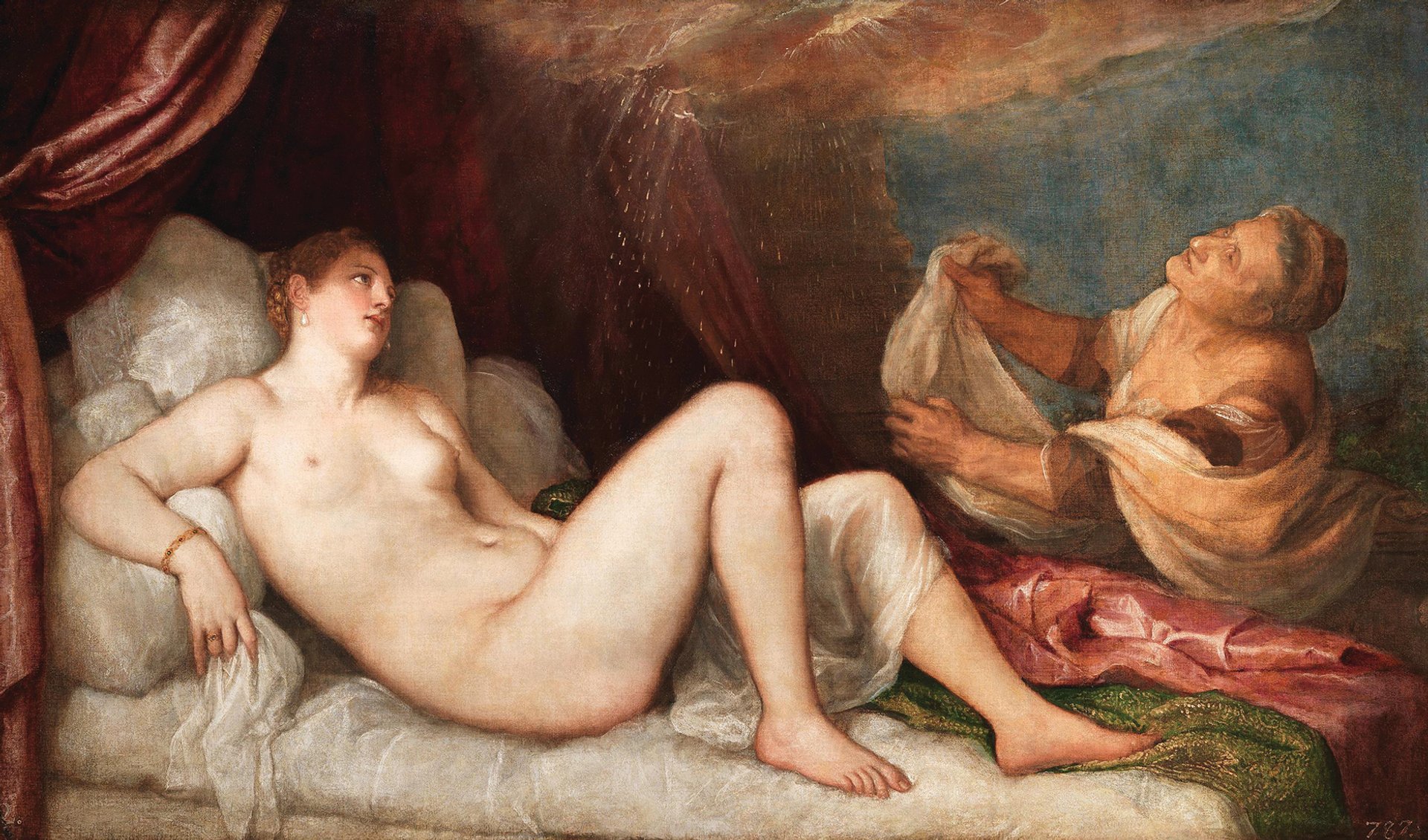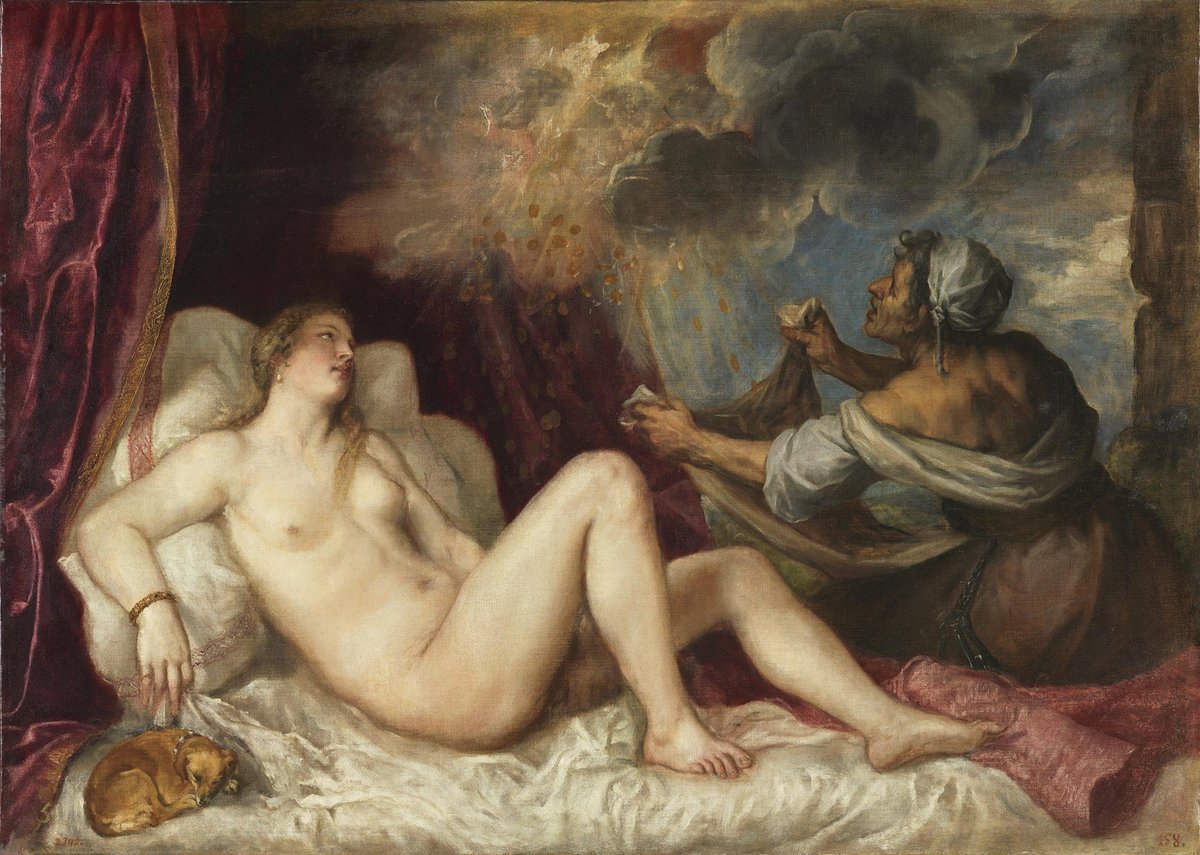The National Gallery has reassembled Titian’s six great mythological poesie paintings, in an exhibition opening this week that will travel to Edinburgh, Madrid and Boston. This is the first time that the works, commissioned by Philip II of Spain, have been brought together since the late 16th century.
However, a controversy has broken out over which of two versions of the Danaë story is the one commissioned by Philip II. Charles Hope, a Venetian Renaissance specialist, believes the painting of Danaë commissioned by Philip II is not the one from the Wellington Collection at Apsley House, London—which is included in the National Gallery exhibition—but Titian’s Danae and the Shower of Gold, now at the Museo Nacional del Prado in Madrid. Among other concerns, he cites the fact that the Prado version is of a superior quality and regrets that it will not be featured in the reuniting of the poesie. Another Renaissance expert, David Jaffé, who curated the National Gallery’s Titian exhibition of 2003, agrees that the Prado Danaë is “a better candidate [for the poesie series] than the not very exciting Apsley House painting”.
Until 2004, the Prado Danaë was accepted as part of the Philip II series. In that year, the specialist Paul Joannides tentatively put forward a theory that the Wellington picture was in fact from the original set. This was supported by the Prado’s curator (and now director) Miguel Falomir. The art historian Peter Humfrey considered and rejected Joannides’s theory in his book on Titian of 2007.

Danaë, the Wellington Collection, Apsley House, London. Compare and contrast: The Prado version was long-accepted as the version commissioned by the Spanish king. The Titian exhibition at the National Gallery, London, includes the cut down Wellington Collection version, in line with a reattribution first made in 2004. © Stratfield Saye Preservation Trust
Matthias Wivel, the curator of the National Gallery’s 2020 exhibition, supports Joannides, following substantial new evidence occasioned by the restoration and technical examination of the Wellington picture in 2014 and the two versions being displayed side by side in the Prado. Presenting the body of evidence, he writes in the exhibition catalogue that it “establishes the Wellington painting as Philip’s Danaë and not only reintroduces a hitherto underappreciated picture to the conversation, but also enriches our understanding of Titian’s arrangement with Philip, his workshop practice, and ultimately one of his most radical, erotic and human inventions.”
But in a letter to The Art Newspaper, Charles Hope still questions the Joannides attribution. Hope writes: “[Joannides and Falomir] do not explain why Titian should have sent Philip a work as inferior as the one at Apsley House, but later should have painted the much finer Prado version.”
The Prado’s Danaë will be included when the exhibition travels to Madrid, in what will be a broader presentation, but not as part of the poesie.
• Titian: Love, Desire, Death, National Gallery, London, 16 March-14 June; Scottish National Gallery, Edinburgh, 11 July–27 September; Museo Nacional del Prado, Madrid, 20 October–10 January 2021; Isabella Stewart Gardner Museum, Boston, 11 February–9 May 2021



